Have you ever felt your shoes nipping your toes or pinching your heels? Thankfully, there are ways to mitigate this discomfort by stretching your shoes, and we’ll show you how.
Even if you have taken the time to follow our guides on how to achieve the correct fit with dress shoes, there is a chance that your shoes might feel a little uncomfortable. The reality is that even a high-quality pair of leather dress shoes has the potential to feel too tight – at least at first.
How A Dress Shoe Should Fit – Guide To Finding Your Shoe Size
Remember, even though humans are naturally asymmetrical, shoes are made to be mirror images of each other, unless you go bespoke. This means that most of the time, one foot could feel fairly comfortable and the other might be a bit more constricted, so it’s completely normal to feel like this unless you’ve bought a pair of shoes that are dramatically too small for you, in which case, the discomfort will be much greater for both feet.
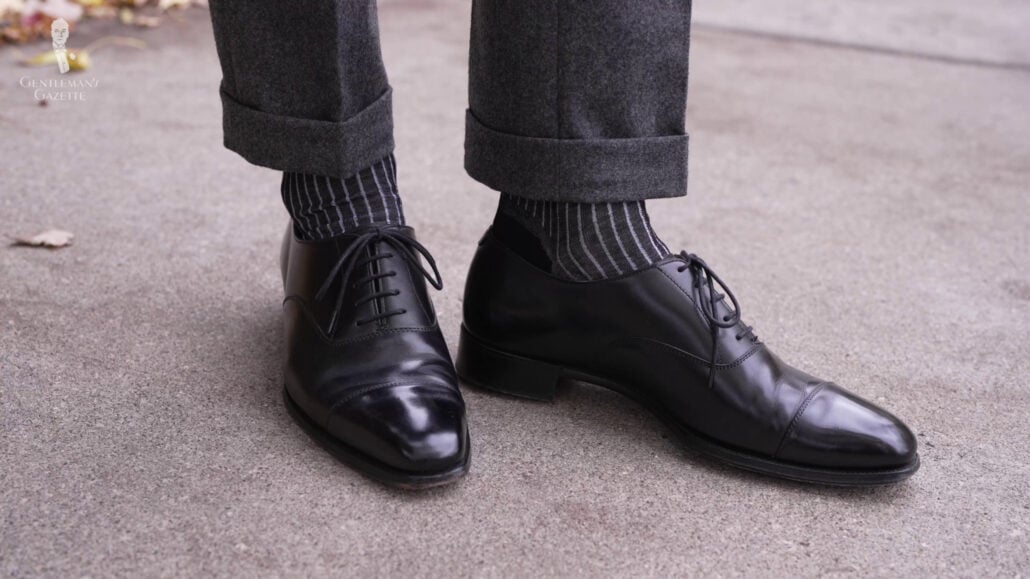
That being said, it can still be an uncomfortable feeling to have your shoes pinching you in certain spots, so we’ve got eight tips today on how to successfully stretch your shoes. We’ve included both simple home remedies and some more advanced stretching techniques.
Before we jump into our list, though, we’ve got a quick disclaimer: Bear in mind that you should be stretching shoes with caution.
In addition to the eight techniques we’ve rounded up today, we’re also aware of other methods floating around the internet that involve things like water, steam, rubbing alcohol solutions, and even freezing your shoes. Some of these steps, however, could potentially damage your shoes.
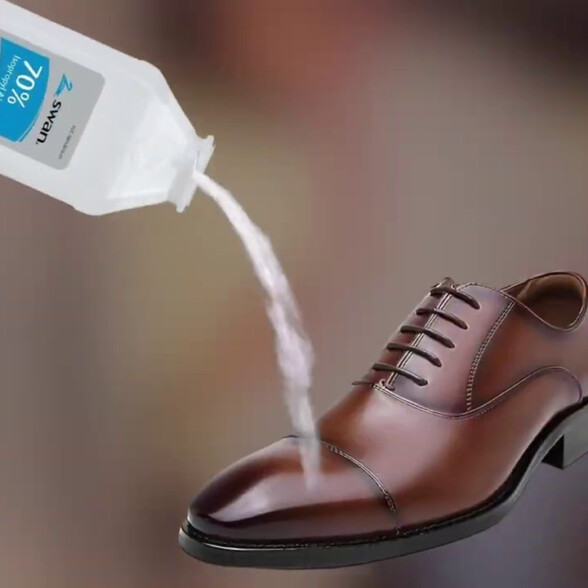
WHEN STRETCHING SHOES
Be careful!
Remember that leather shoes aren’t designed to be subjected to large amounts of moisture at one time – let alone stripping out the natural oils and potentially even the color from the leather with rubbing alcohol. So, while these other methods are out there, we wouldn’t recommend attacking your shoes with harsh chemicals or drastic processes. You’ll be attempting shoe stretching at your own risk, so it pays to do so carefully and with patience.
How to Stretch Your Shoes
1. Understanding Your Leather
Any and all of the remedies we’re discussing today will require a bit of knowledge on what type of leather your shoes are made from. After all, not all leathers are the same, and they’re going to require different levels of time and attention when you’re going about stretching them.
Differences in leather are something we’ve discussed on the channel before, and, in particular, our guide on the differences between chrome-tanned and vegetable-tanned leather is a great place to start. And while we’re on the top of shoe materials, it’s an unfortunate fact that man-made and synthetic faux leathers aren’t going to stretch much, if at all.
Chrome Tanned vs. Vegetable Tanned Leather, Explained
This is usually due (at least in part) to the static coating applied to the materials during manufacturing. So, if faux leather or other synthetic shoes don’t feel comfortable when you first put them on, chances are they aren’t ever going to, even with the remedies that we’ve got prepared for today. So, you’re better off skipping these methods for synthetics unless you’re willing to risk a rip or tear. Luckily, most high-quality shoes are made from genuine leather, so our techniques are still going to come in handy. This brings us to our next tip.
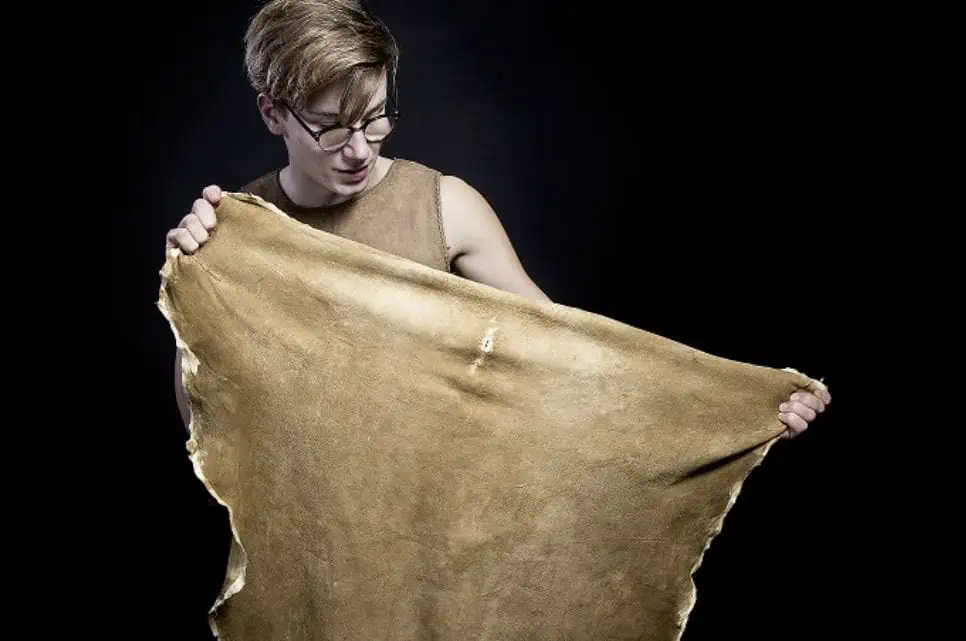
2. Use a Quality Conditioner
Another of the most essential things to consider when embarking on any leather stretching is to keep that leather hydrated and supple. Don’t forget that leather is a skin and a natural material, and the benefits of this include a natural elasticity, which will vary from leather to leather. This elasticity, however, isn’t infinite, so take care when stretching leather by applying small amounts of high-quality conditioner when needed. And be sure to have some patience, too, as any leather stretching process is going to take longer than just five minutes.
So, applying a little bit of conditioner often will generally yield better results than over-applying in copious amounts at one time.
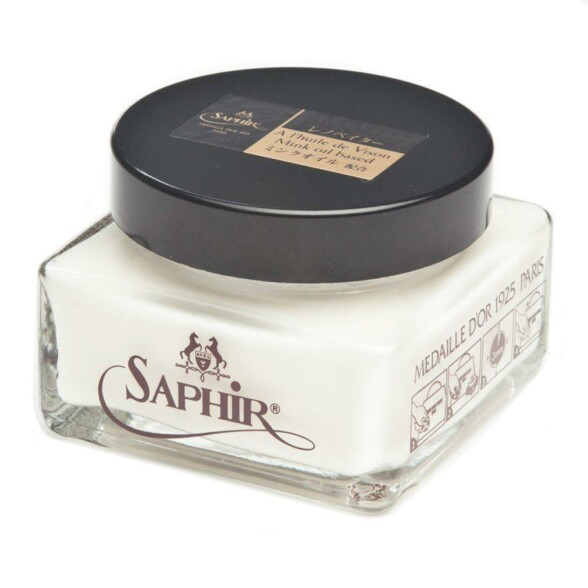
Saphir renovateur cream
If you’re looking for conditioner recommendations, this conditioner contains beeswax and natural oils that will keep your leather supple and hydrated, but there are many other quality products out there as well.
Conditioning isn’t a one-size-fits-all equation, as different leathers are going to need different products to suit them best. So, once you’ve identified the leather you’re dealing with, you will best be able to find a conditioner that will suit your needs.
3. Wear Your Shoes at Night
The next tip is to wear your shoes at night, and no, we don’t mean in bed. Throughout the course of the day, our bodies slightly change in size and shape, with our feet being especially prone to this. They’re generally going to get a bit larger over the day as blood tends to settle slightly in the feet.
But, you can use the fact that your feet will be a bit bigger toward the end of the day to your advantage: wearing your shoes around the house for a few hours in the evening can be a good technique, especially as you’re probably only going to want to wear a tight pair of shoes for short amounts of time anyway. This will also be a more gentle process for both you and your shoes, and you should start to see some results in a week or two.
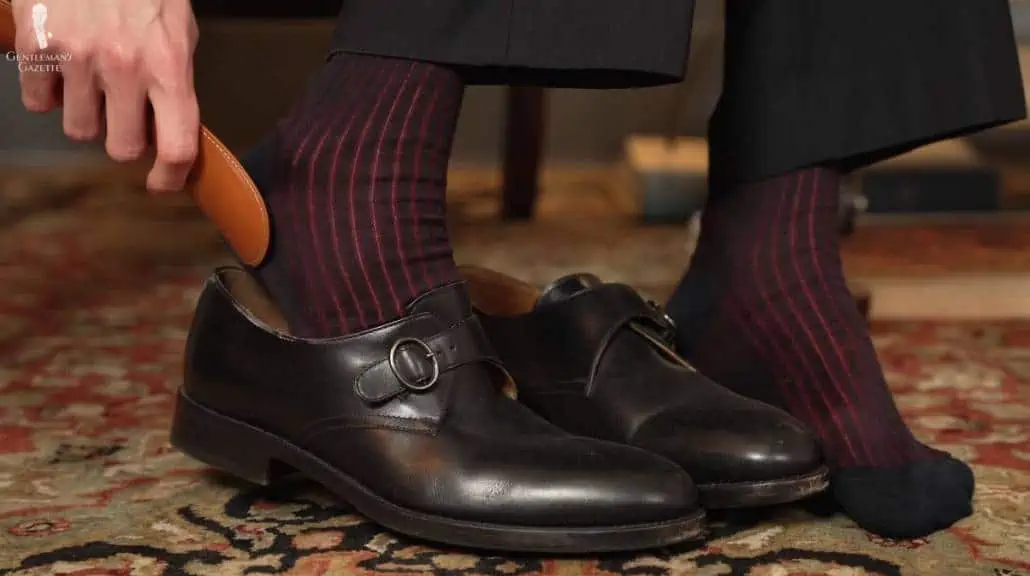
You could think of this as a bit of mindful wardrobe maintenance and perhaps even wear that “too tight” pair of shoes while you’re polishing all of your other shoes. It is worth mentioning though, that this method won’t give you much protection from potential blisters that might form, which brings us nicely to our number four method.
4. Wearing Thick Socks
This is one of the oldest tricks in the book: wearing thick or multiple pairs of socks in order to stretch out shoes is a very popular method that really needs no further instructions: just make your feet a bit bigger by wearing thicker or multiple pairs of socks and, again, wear your “too tight” shoes for a few hours at a time.
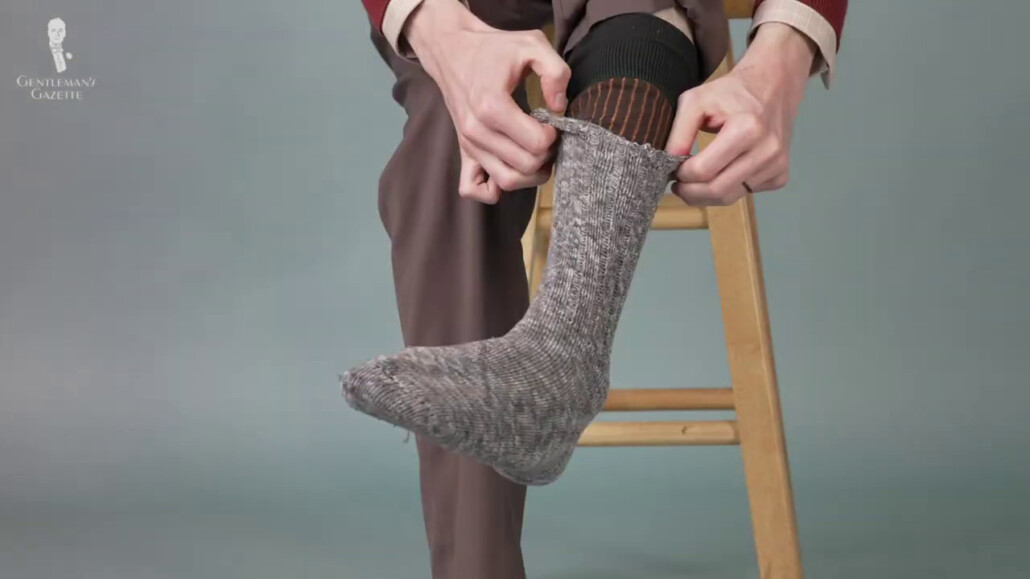
Granted, this is likely the most uncomfortable method on our list, so take care not to harm your shoes or yourself by simply jamming your socked feet into them. And if you’re already suffering from discomfort or foot ailments, this is one method we’d probably recommend you avoid.
5. Get Creative With Shoe Trees
If you’re using a pair of shoe trees in your shoes (and you should be), then you can take a tip from bespoke shoemakers by adding a bit of material onto your shoe trees to help stretch out your shoes.
As the feet of a bespoke shoemaker’s clients tend to change a bit over time, they’ll simply augment their customized wooden shoe lasts by adding pieces of leather or other material rather than making a new last for every new pair of shoes. So, you can take a hint from this method by either gluing or taping pieces of material to a pair of shoe trees that already fit your pair of shoes relatively well.
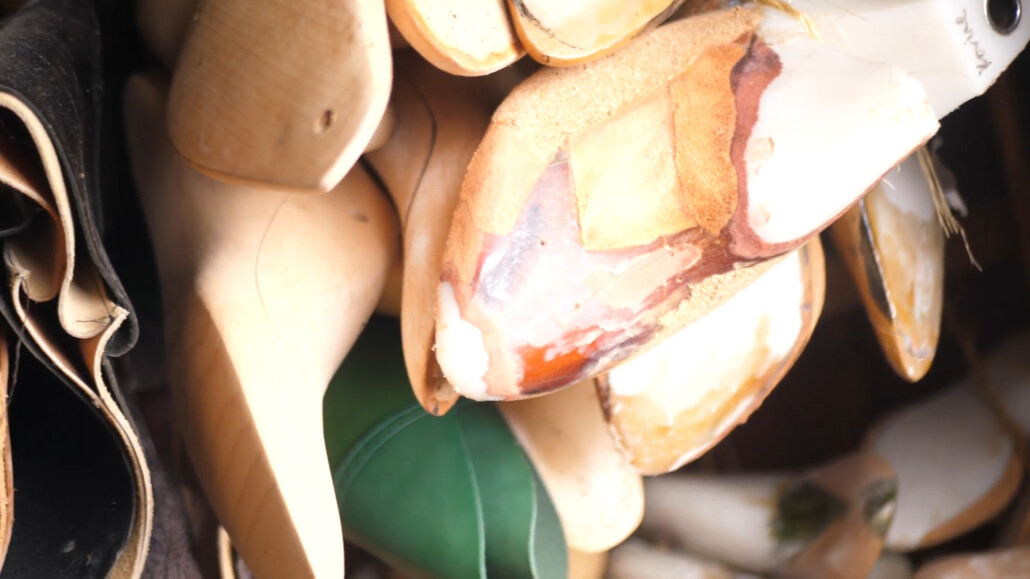
Things like tightly gathered newspaper or scraps of cloth would be good items to consider affixing to your shoe trees to make them a bit more bespoke in your shoe stretching process.
So, at this point you might be asking: Why not just buy a pair of shoe trees the next size larger? Well, you could, but consider how this will affect the whole of your shoes. After all, maybe the area that you need to be stretched is in the toes or across the joints, but the heels of the shoes already fit you just fine.
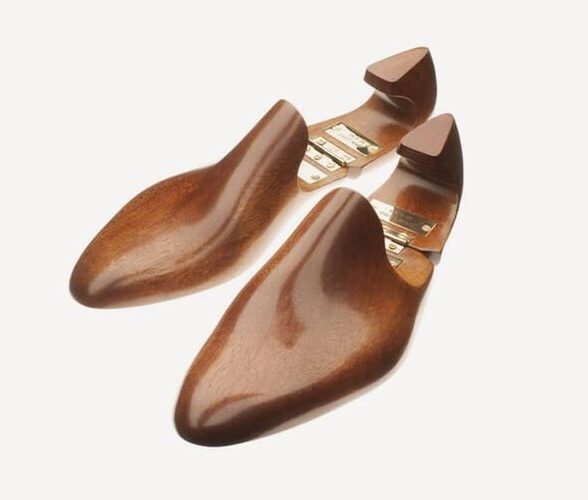
USe Shoe trees
Wardrobe, Clothing and Accessories
In Your Size
When you buy something using the affiliate links on our site, we may earn a small commission.
A shoe tree helps not just in maximizing the life of your shoe but also helps stretch the shoe when it is too tight. But remember to use your perfectly sized show trees, and play around with materials to make it just slightly bigger. Putting in a shoe tree that’s larger all around risks upsetting the balance of the shoe overall, so we wouldn’t recommend doing this generally.
This shoe tree method is probably the most pain-free for both you and your shoes as you simply insert the trees and let your shoes sit while they stretch. And if you’d like to augment this method to introduce even more exactitude, then you can go with tip number 5-A here.
5a. Use a Shoe Stretcher
Widely available, shoe stretchers are essentially a specialist type of shoe tree that is designed specifically to stretch your shoes.
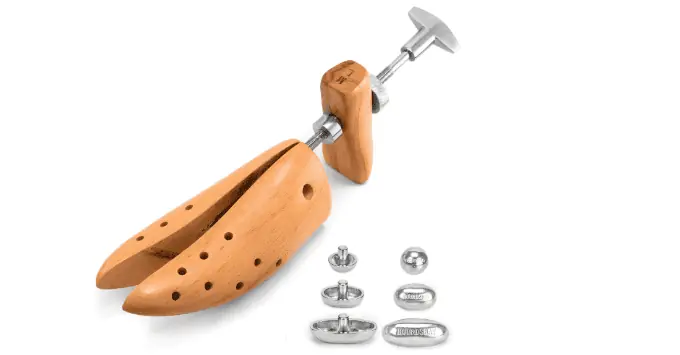
Shoe stretchers are designed to be flexible to accommodate your stretching needs and can even come with small attachments to alleviate specific ailments like corns or bunions. The downside of shoe stretchers, though, is that they’re typically fairly commercial, meaning they’re applicable to many people but might not necessarily be directly applicable to you.
For example, if you do suffer from corns or bunions, but not in the location where the shoe stretcher can accommodate for corns or bunions, then it’s not really going to help you very much. So, this shoe stretching solution is one that will work for some, but probably not for everyone.
6. Apply Heat
Another common solution to shoe stretching is the application of heat. It should go without saying you need to be careful here. There are lots of guides online about how to do this, but we suggest that you err on the side of caution. Heat will soften the leather and give it some additional pliability, but it’s not going to be able to turn it into easily malleable putty.
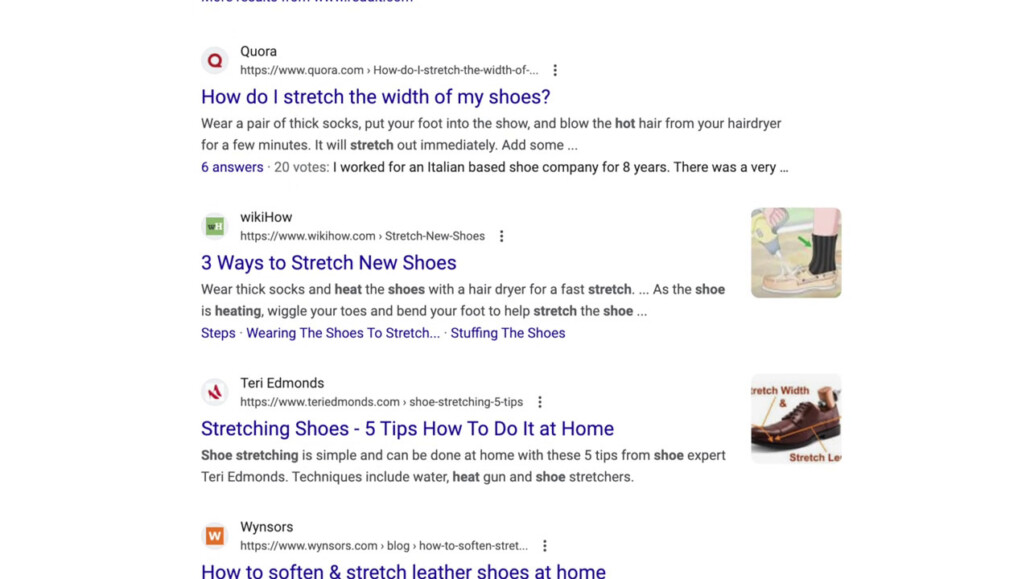
You may have seen professionals use things like a heat gun or even a heated teaspoon to shape and manipulate leather, but these have the potential to damage the shoes or for you to hurt yourself if you are not fully trained in the process.
But, if you are going to use heat, it is still best used while you’re wearing and flexing the shoes or have them molded into position thanks to a shoe tree or stretcher. When applying the heat, pay attention to how closely you hold it to your shoes.
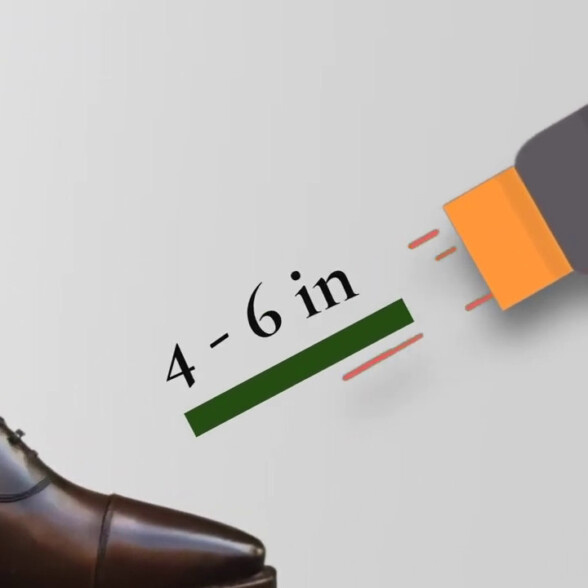
applying heat
Mind the distance
When using heat, it is still best used while you’re wearing and flexing the shoes in question. Therefore, we suggest sticking with a warm to hot hair dryer, held four to six inches away from the leather’s surface. And don’t overdo it!
Especially in the case of lighter-colored leathers, there is still the potential for you to end up with burn marks if you aren’t careful. And remember, again, to make sure that your shoes are well-conditioned as heat will dry out leather over time, meaning that it might crack if it’s not sufficiently hydrated.
7. Know Your Limits
As we alluded to earlier, you simply have to accept that you won’t be able to stretch shoes up several sizes. Realistically speaking, just half a size can be a challenge, even if you’re taking the shoe back to the original manufacturers. This is because there’s only so much give that any leather will be able to provide to you.
So, be realistic in your expectations and keep in mind that shoe length is much harder to alter than shoe width. This is because of the additional hard structures in the toes and heels of shoes, which can sometimes be made (especially these days) from plastic. Remember that the sole and footbed of the shoe are going to hold you back to a certain length as they’re not going to stretch, so you’re only going to get so much play around those areas.
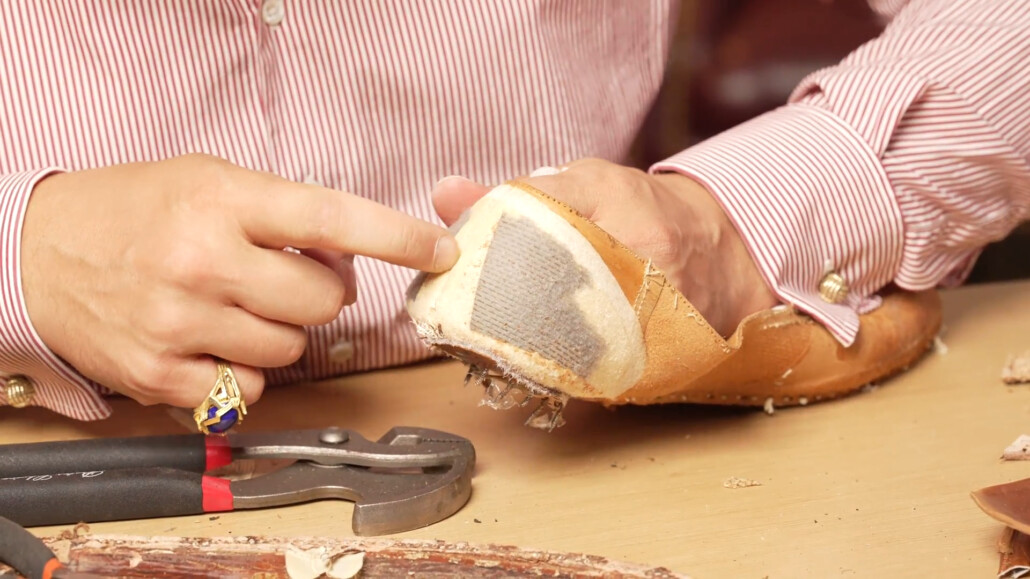
Width is easier to stretch then as this is where your shoes are designed to bend and flex anyway, and some shoe styles are also going to be easier than others to attempt to stretch. Additional layers of leather in the form of cap toes or wing tips are also going to provide another level of consideration. Meanwhile, models that have a plain toe or minimal detailing, like whole cuts, are generally going to be easier to stretch.
8. Go to a Professional
If none of the methods we’ve outlined already work for you, or if you’d just like to put your shoes in the hands of someone who does this for a living, then visiting a professional is probably going to be the answer for you.
First, you’re probably going to receive the best outcome if you’re able to return the shoes to their original maker. This is because they’ll know exactly how the shoe was made and can even take your shoes apart in order to stretch them if they need to. And in some cases – like our scriptwriter, Jack, who is experienced with the brand Edward Green – they might be able to re-last your shoes on a different or larger last if need be.
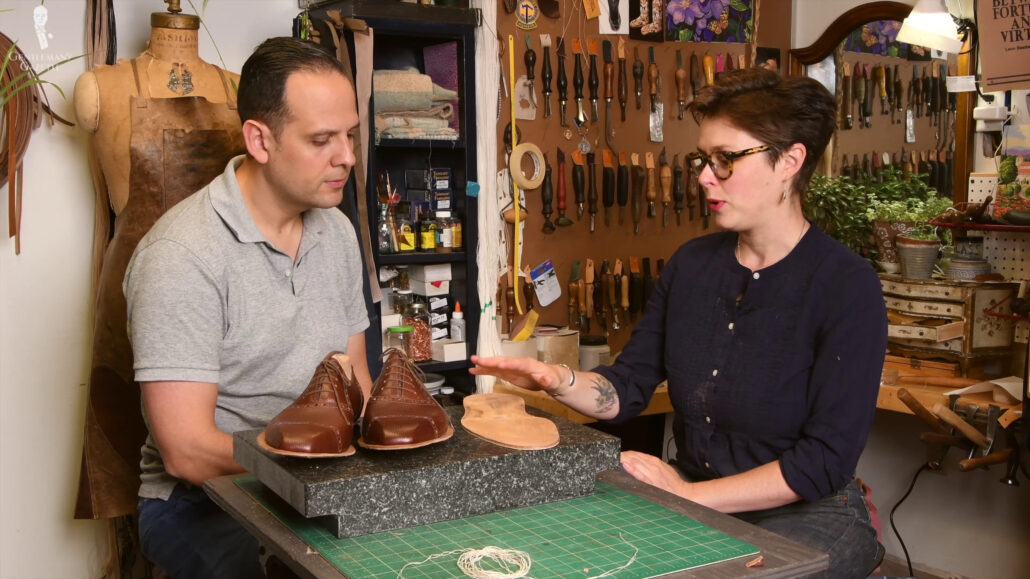
Otherwise, you can employ the skills of a local cobbler who will be able to use less invasive methods to stretch your shoes a bit. As with most things in life, seeking out a professional is likely to come with a cost, and while this cost might seem high at first, weigh it against the potential for ruining a pair of shoes in trying to stretch them.
So, if you’re at all squeamish about stretching a pair of shoes yourself, then the professional route might be for you. However you choose to do it, we hope that we’ve given you some confidence to stretch that pair of shoes that’s been giving you grief or giving you blisters.
Conclusion
Utilizing one or several of today’s methods, you should hopefully be able to get a more comfortable wearing experience out of your shoes.
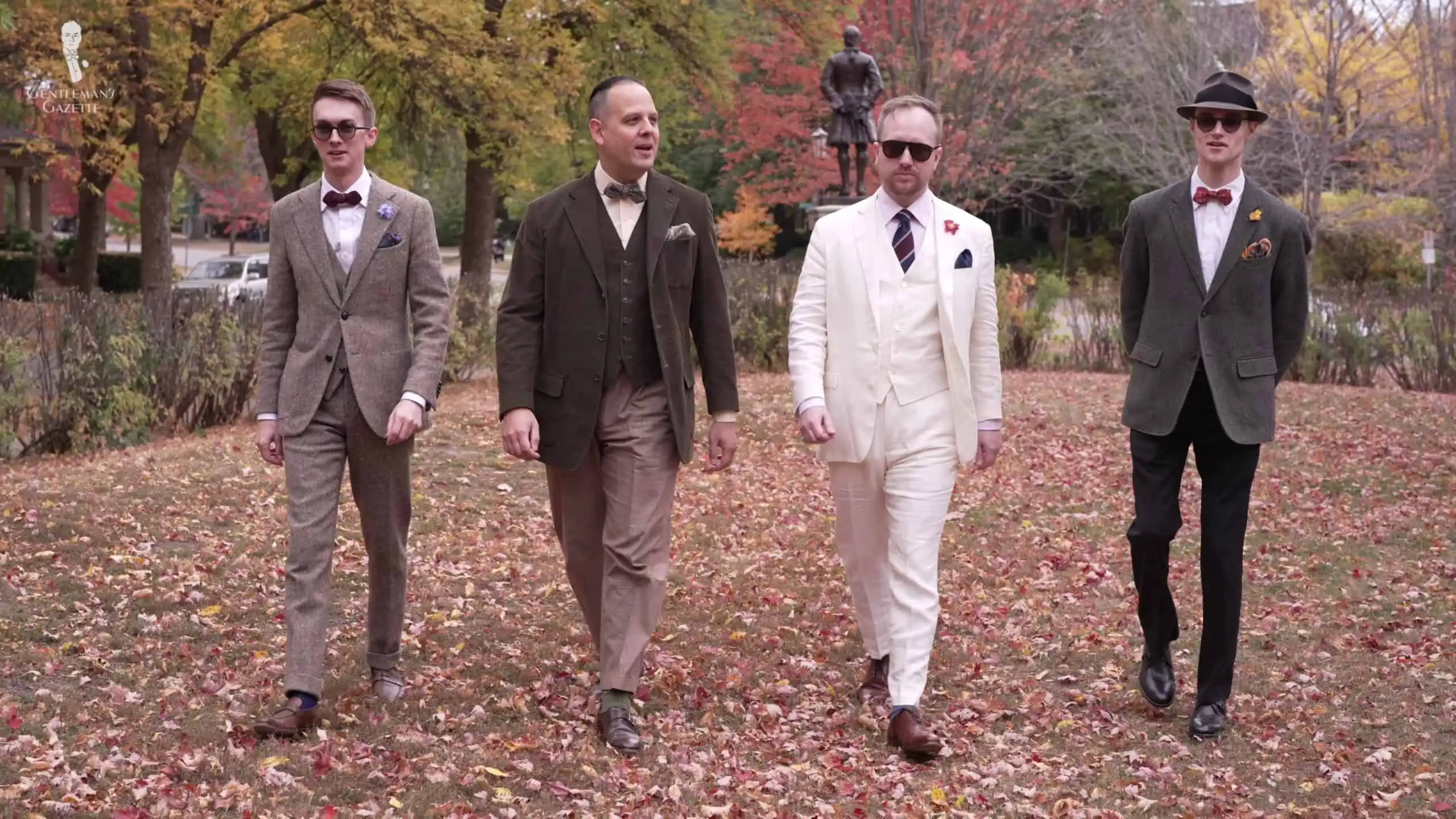
Have you tried any of these methods before or will you be trying a specific one of them now? Let us know in the comments below.
Outfit Rundown
Today, I’m wearing a casual outfit good for spending some time around the house and perhaps doing some shoe maintenance.
My entire outfit features orange and brown tones, and we’ll start here with my dark rust orange cardigan sweater from Lands’ End, which also features contrasting buttons.
I’m wearing it over a shirt in terracotta with a glen check pattern on a white ground from Proper Cloth. The shirt features French cuffs, but I’ve got them configured in a barrel style today with simple black cufflinks to fit more easily under the sweater sleeves.
My trousers are plain brown with a reddish undertone, and my shoes are medium brown brogued derbies with wing tips and no medallion on the toes.
As you’ve no doubt noticed by now, I’ve also been letting my beard grow for a while. This seemed appropriate for the casual nature of today’s outfit. Let me know in the comments below if you like this look on me.
Rounding out my outfit today are my two-tone, shadow-striped socks in charcoal gray and orange, which provide a brownish color feel when viewed from a distance. And for my fragrance today, I’ve gone with Diciassette Rosso or 17 Rosso from the Roberto Ugolini collection.
With heart notes including Damask rose and pink pepper, it has both a floral and a spicy quality that I enjoy, and the red of the bottle also harmonizes well with the warm orange tones in my ensemble.
So, for the socks I’m wearing today and fragrances from the Roberto Ugolini collection, along with a wide array of other classic men’s accessories, you can take a look at the Fort Belvedere shop.
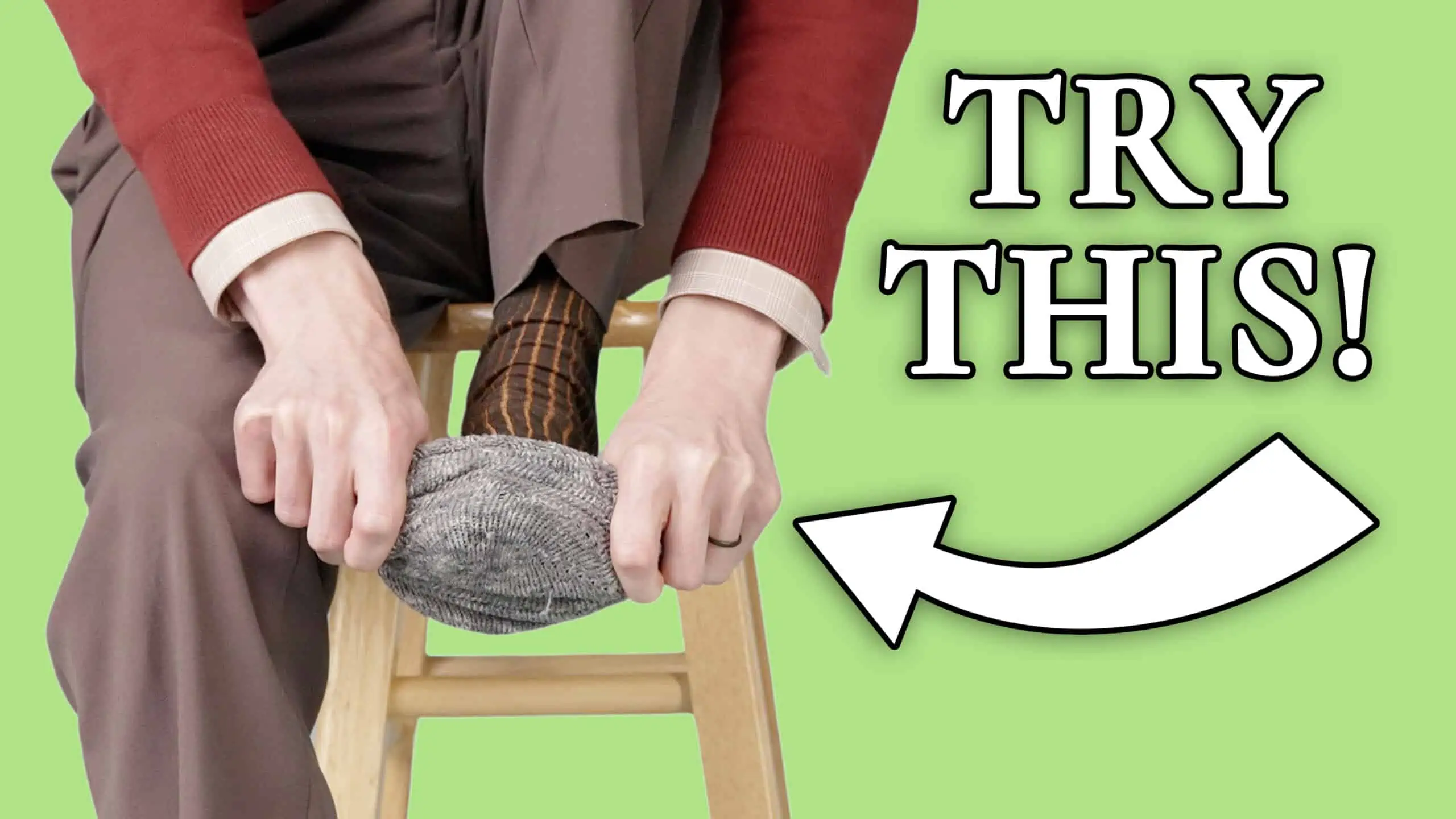
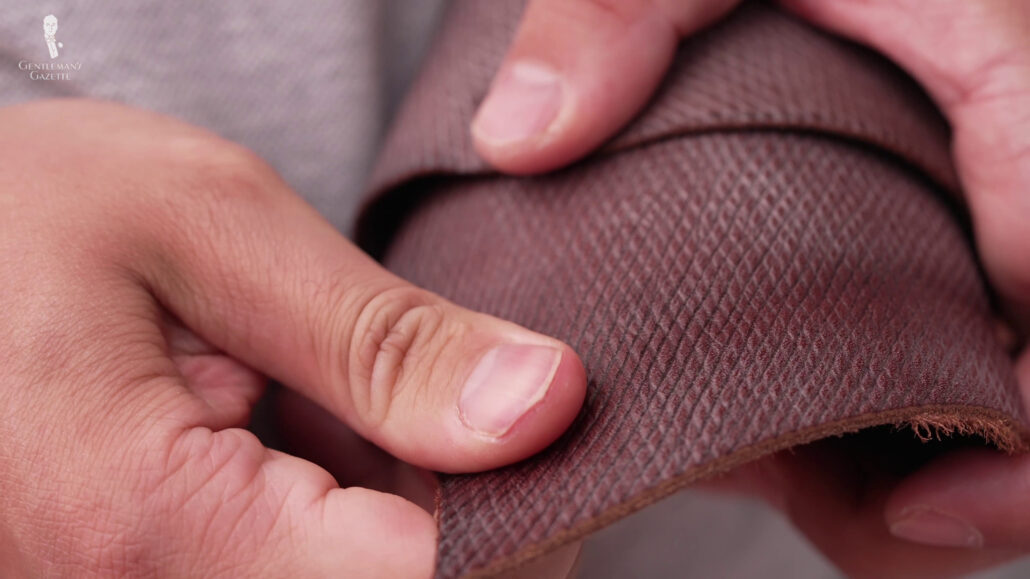
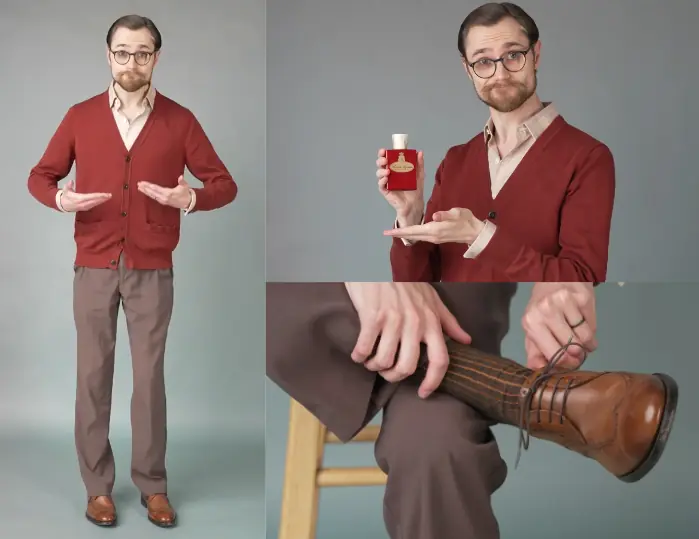
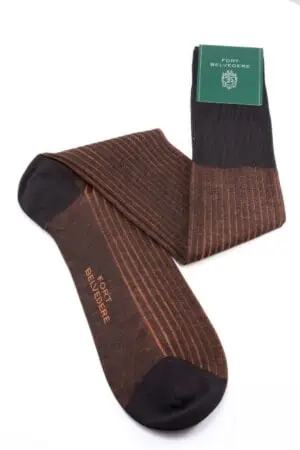

Very good post, Preston.
I used to have a mechanical shoe stretcher. I used it to widen 2 pair of Lloyd & Haig oxford/brogues and a pair of Churches Prince Albert velvet house slippers that were passed down to me after my grandfather’s passing in the mid 80’s. I still wear the black quarter brogue L & H’s and the Burgandy PA slippers (with POW Rampant Lion Crest) with my white dinner jacket. Shoes and slippers are circa 1940s. Both fits are very comfortable.
Sadly, the stretcher and other pair of L & H cap toes have been lost to history.
Preston, The beard looks terrific – maybe, in time, a little fuller along the jaw line ?
All the best,
James I. Laursen
Preston:
The beard totally works